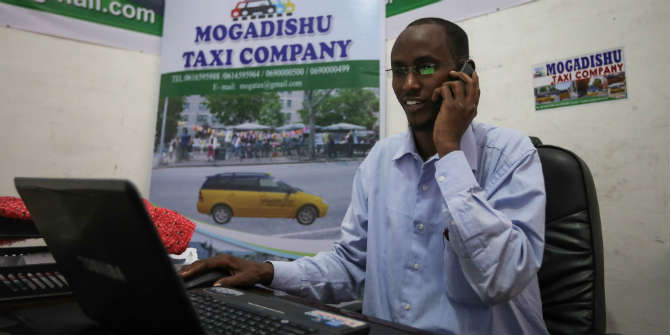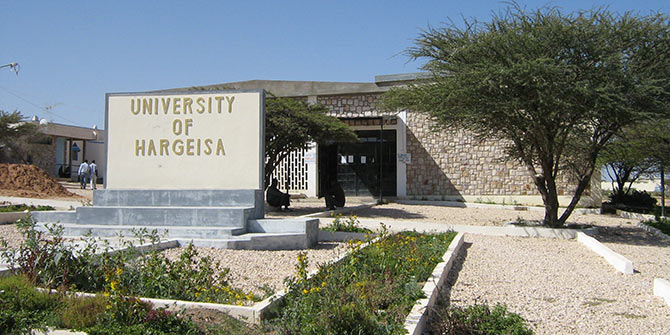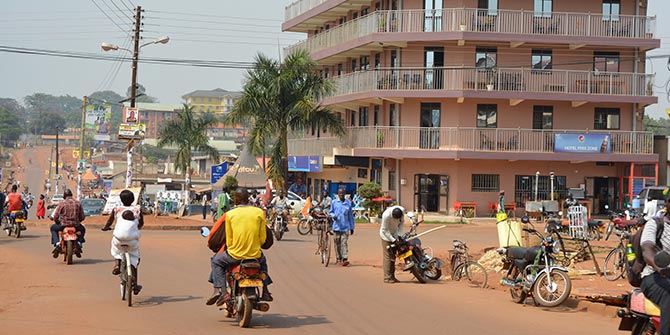Drawing on interactions with more than 120 young people across Uganda, Maya Turolla and Haley Swedlund provide an analytical framework to help researchers and policymakers to better study and tailor “youth” interventions. They argue that rather than simply targeting youth as an age-bracket, policies and programs need to consider the diversity of experiences and challenges faced by young people.
“Stop calling me a youth! I’ve been circumcised!” Alex, a twenty-five-year-old fruit vendor at Nakasero central market in Kampala, Uganda, told us. Yet, later the same morning, Alex asked for advice on how to access a youth development project. Alex’s seemingly contradictory words reflect the fluidity around the concept of “youth.” Youth has different meanings to different people at different times. How, then, can researchers and policymakers interested in African youth study and target the needs of young people across the continent?
In an article published in Africa Spectrum, we present research from 110 interviews and 10 focus groups with young people engaged in commercial agriculture in all four regions of Uganda. These young “agripreneurs” told us that their challenges are largely unrelated to age. Instead, other factors, such as access to markets or the availability of land, are more important to their success in commercial agriculture.
Why is it important to understand ‘youths’ better?
The so-called ‘youth bulge’ in Africa has attracted extensive attention from both politicians and policymakers. In sub-Saharan Africa, roughly 42 per cent of the population is under 15, while in Europe, only 15 per cent are under 15. In Uganda, the average age is 16.
These demographic realities have resulted in a wide range of development programs targeting youth—particularly in employment and agriculture. The World Bank warns that only 3 million jobs are created every year in Africa, yet 12 million African youths enter the job market annually. With 40-63 per cent of young Africans engaged in some type of agriculture, politicians and policymakers have invested millions of dollars into youth agricultural programs designed to increase employment prospects and yields.
The problem is that such programs often lose sight of the vast heterogeneities amongst youths. They forget that the category of ‘youth’ is socially and context-dependent. ‘Youthhood’ may be meaningful in some contexts and not in others. Instead, selection for such programs is commonly determined by whether or not someone meets an arbitrarily defined age range.
From our interviews, we identified 12 overlapping factors across three dimensions that are particularly influential in determining our respondents’ identity and agribusiness practices.

The first category, territorial embedding, refers to the differences in context across the four regions. The economic opportunities of youth in agribusiness and, therefore, their ability to obtain the social status of adults vary across the regions. For instance, underdeveloped infrastructure in the Northern Region means that youths there have a more difficult time engaging in commercial agriculture. In contrast, youths in the Central Region have many more agribusiness opportunities. As Dorah, a young woman engaged in a piggery project on the outskirts of Kampala, put it, “If you want to die rich, you have to come to Kampala.”
The second grouping, socio-cultural embedding, refers to the values and norms across different socio-cultural environments, for example, across ethnic groups. Here, the clearest example comes from the Western Region, where there is a strong link between the Bahima ethnic group (historically the same ethnic group as the Tutsi of Rwanda) and the dairy sector. On the other hand, the Bairu (historically the same ethnic group as the Hutu of Rwanda) are more commonly engaged in matooke, coffee, and horticultural production. While Bairu have long been owners of land, Bahima were nomadic until the late 1980s, when President Museveni allocated land and enforced a schooling policy.
Women across the country, especially in rural areas, face high levels of gender discrimination, especially in land ownership and agribusiness entrepreneurship. Women are employed in many different value chains, but their economic role is commonly limited to marginal roles. For example, women are often engaged in production and market trading, but not in transportation or as agribusiness owners or directors. Most of our female respondents reported that even when they brought in their own income, they were not allowed to administer it. As Vanessa told us, “Even when you are providing for the family 100 per cent, you’re not supposed to say that you are the breadwinner.”
The third category, value-chain embedding, refers to how agripreneurs are positioned within the market. In each region, agripreneurs were influenced by their proximity to local and neighbouring markets. Proximity and access to markets allows input buying and produce selling and enables access to information on prices, crops, and technology. Kampala and the surrounding peri-urban districts of Wakiso, Mpigi, and Mukono offer more profitable agribusiness opportunities because of higher prices and the possibility of accessing the international market. However, access to markets is not just an urban/rural issue. For example, agripreneurs in the Northern Region have trade connections with South Sudan, while in the Eastern Region, the proximity to the Kenyan border facilitates a cross-border regional food market.
Redefining youth
Youth is an important category demographically, but the opportunities and challenges faced by those labelled as ‘youth’ are often not related to age. Youth as a label is meaningful at certain times but not in others.
As Alex told us at the Nakasero market, he is not a youth. Not only has he been circumcised, but- culturally, he has accomplished too much to be called a youth. Yet, at 25, the Ugandan Constitution and most development programs classify him as a youth. The label is both insulting and affords him certain opportunities.
In research and policy, it is necessary to account for the diversity of experiences grouped under the broad label of youth. Youth is more than just an age range. Academics and practitioners should understand the vast differences across this growing segment of the African population.
Photo: Agripreneurs felicitate with Adesina, AfDB President. Credit: International Institute of Tropical Agriculture. Licensed under CC BY-NC 2.0






Where I live, this is often seen as a delicate thing and people rarely talk about it.